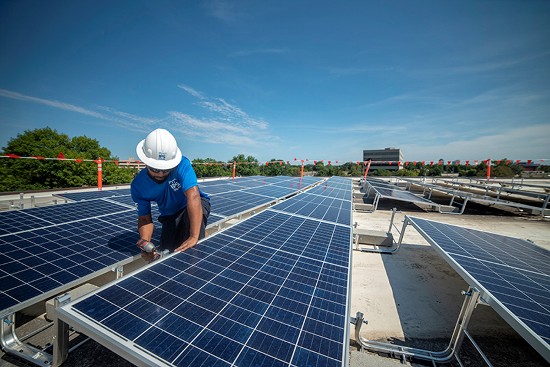Please welcome back Jane Marsh, a regular guest contributor to the 21st Century Tech Blog. In her posting today she describes how some countries are getting home solar installations right, while others are getting it very wrong. How can governments help to make every eligible home go solar? One would think that the recent U.S. Inflation Reduction Act (IRA) would stimulate widespread adoption. But before I go on a rant, I will let Jane tell the story.
Why are U.S. homeowners seeing delays in solar installations? Australia recently topped its rooftop solar panel installation record reminding nations worldwide that residential solar can play a significant role in creating energy independence while reducing carbon emissions. It’s not price that is holding solar back because in the U.S. the cost of residential solar has never been more competitive because of the IRA and state policy initiatives. Solar is getting lots of positive press, so why aren’t homeowners taking to it faster?
Disrupting Solar’s Shining Reputation
The problem lies with solar providers. Homeowners are becoming jaded by slowly deteriorating reputations. Even with the tax credits and promotions, arrays to power homes remain expensive requiring tens of thousands of dollars in investment and resultant financing.
Installers who don’t know what they are doing may not hook up the rooftop solar installation to the grid so homeowners end up receiving a standard utility bill while having to pay back the cost of the installation which defeats one of the purposes of going solar in the first place. Why should a customer sign a contract to pay for panels that may not work the way they are supposed to for months? Why is this even happening?
Because of poor business practices from solar companies, the consumer allure of renewable energy and the contribution it can make to a green future is eroding.
Analyzing the Supply Chain
The solar industry is facing supply chain problems. This is not a unique experience with the past few years seeing major disruptions to world trade. Obtaining the raw materials and the manufacturing capacity to meet rising demand appears to be happening for almost every product in the global market. So despite the demand being driven by climate concerns and skyrocketing utility prices, the solar industry is falling short. Would more solar panel providers entering the market overcome supply and demand challenges? Not necessarily if material capacity remains constrained.
The real issue is simple. Most of the world’s solar panel materials come from China, and that’s where the distribution bottlenecking is happening. This sole source reliance makes meeting demand next to impossible. No solar provider has a chance to keep sufficient stock because too many are reaching into the same small pot. So adding more solar installation companies doesn’t solve anything.
Another challenge is personnel. There are shortages of workers to transport, harvest and engineer solar panels much less install and connect them to the grid. And there also is an insufficient effort by solar panel contractors to teach customers panel maintenance which would reduce service calls.
Accelerating Progress Without Interconnection
Solar energy technology continues to advance faster than most humans can handle. As a result, solar installer practices to keep the technologies operational aren’t always state-of-the-art. The software and online systems for submitting documentation to allow customers to plug homes into the grid remain buggy.
Applications and documents are lost. Clients get forgotten. Flawed systems flag common mistakes or human errors as rejections, leaving customers empty-handed. Customers have argued that the sector’s inefficiency is pushing prospective customers to get proof beforehand that a solar contractor has stock availability before signing on the dotted line.
Delays in rooftop solar adoption in the U.S. are also being caused by providers and regulatory bodies failing to consider the broader lens of technological assets necessary to support demand and regulate automation to balance workloads. Tending to IT issues constantly means resources are unavailable to help hook homes to the grid or advocate for infrastructure changes that would support solar growth.
The communication problems aren’t solely internal because solar panel providers and contractors are asked to work with city planners and engineers. Not all city power grids can handle current residential solar panels let alone an influx of the latest solar technologies. And then there are the utility companies that restrict grid access because they don’t want to lose revenue when rooftop solar reduces electricity demand.
How Solar Delays Are Impacting Progress to Net Zero
The U.S. solar industry needs a good kick in the can to sort out its many problems and challenges. The U.S. is among the world’s nations, an energy hog. Much of that energy continues to be produced by greenhouse gas-emitting power stations. The world can’t afford the U.S. as a laggard in increasing the amount of consumer-based solar power.
A sustainable future requires a better solar plan. No one should have to wait 1,131 days to see their rooftop solar system approved and connected to the grid as was demonstrably documented by Bill Maher, the HBO comedian on his Real Time talk show.
















